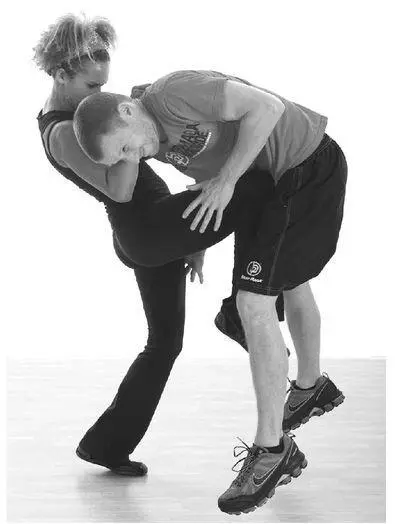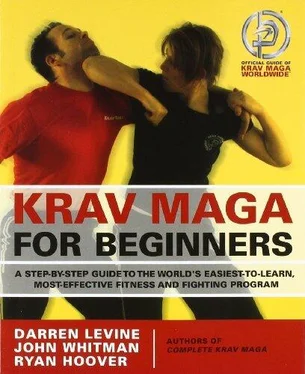The police and the district attorney’s office will use the Reasonable Man standard (or some standard very similar to this) and take into account any specifics that might clearly create the context in their decision to file criminal charges. Use of Force standards for law enforcement officers vary slightly, due to the nature of their jobs. Generally speaking, law enforcement officers are allowed to use one level of force higher than is being used against them so that they can control the situation and arrest the suspect. Civilians are not tasked with the responsibility to arrest offenders. Therefore, in many regions there is no authority to use a higher level of force. Rather, as stated above, civilians are permitted to use enough force to defend themselves…and, of course, the definition of “enough force” falls back to the Reasonable Man standard. Depending on the situation, “enough force” might mean one kick to the groin, but it might also mean picking up a rock and beating your assailant until he is incapacitated.
This last part is, in the end, the message Krav Maga delivers to its students. Use no more force than is necessary…but be totally willing and committed to use whatever force is needed to keep you safe!
Many women fear that they will be victims of a violent and/or sexual assault. Tragically, this fear has its foundation in fact. According to the Rape, Abuse & Incest National Network, one out of every six American women has been the victim of an attempted or completed rape in her lifetime. Often, women are physically and/or sexually abused by someone they know.
Society has a responsibility to change itself so that women are not put at risk. However, until that happens, women should make every reasonable effort to make themselves safer. Women need to learn to defend themselves, regardless of age or ability. Fortunately, Krav Maga is already designed for women’s self-defense needs.
Statistics from several major studies done in the last 20 years show that women who fight back increase their chances of avoiding rape. In 1985, Pauline Bart and Patricia OʹBrien published a study called “Stopping Rape: Successful Survival Strategies.” In 1993, Sarah Ullman and Raymond Knight published a study called “The Efficacy of Women’s Resistance Strategies in Rape Situations.” Another article that bears mention was published in 1999 by S. Margaret Heyden, Billie Francis Anger, Tiel Theng-Woo Jackson, and Todd David Ellner. The article, titled “Fighting Back Works: The Case for Advocating and Teaching Self-Defense against Rape,” summarizes the results of multiple studies (including the Bart & OʹBrien work mentioned above) and offers an interesting breakdown of various types of resistance. All these publications are, in our opinion, recommended reading for anyone interested in detailed statistical analysis of rape situations and various types of resistance used by women.
The conclusion: Approximately 70 percent of women who fight back during an assault avoid rape. The actual percentage varies from study to study, but the vast majority of studies indicate that some level of active resistance improves a woman’s chances of avoiding rape.
“Fighting Back Works” creates categories of resistance that prove useful to our discussion. Resistance can be classified in the following ways:
• Non-forceful verbal resistance (crying, pleading, reasoning, etc.)
• Forceful verbal resistance (yelling and screaming)
• Non-forceful physical resistance (running)
• Forceful physical resistance (fighting back)
The results of several studies report that reactions such as crying or reasoning are least likely to work. In one study, women who tried these strategies avoided rape only 4 percent of the time. In cases where women offered forceful verbal resistance, they successfully avoided rape 50 to 56 percent of the time. The data on non-forceful physical resistance (running) was mixed, with the results ranging widely. One study suggested that running worked 55 percent of the time, but the Bart and OʹBrien study reported that 85 percent of the women who ran successfully avoided rape. As for the women who fought back forcefully, they avoided rape anywhere from 55 to 86 percent of the time.
There are a lot of numbers listed here, and we should not forget that each of these “percentages” is a living, breathing human being who was put in a horrible situation. But the studies give us valuable information: Fighting back increases your chances of avoiding rape.
Of course, there are no guarantees. Even if the 70 percent number quoted above holds true, that still means that 30 percent of women who actively fight back are still raped. There is no silver lining in that dark cloud, but there is one more important statistic: Studies indicate that women who fight back are no more likely to suffer additional physical violence (such as additional beatings or abuse) than women who do not.
The bottom line is clear: You have nothing to lose by fighting back, and everything to gain.
Fighting Back
Assuming that these studies are correct, how do women learn to fight back? Krav Maga is a system designed for use by men and women, and the instinct-based foundations of the techniques mean they can be accessed during the stress of a rape attempt.
The acknowledgement of your instinctive reactions under stress is important. For example, Krav Maga offers a technique for when the attacker is on top of you and “in your guard” (between your legs). In other systems such as Brazilian jiu-jitsu (and, indeed, later in Krav Maga), you would learn very effective techniques for wrapping your legs around an attacker, controlling him from beneath, and then reversing or submitting him. These techniques are proven to be effective. However , they’re not instinctive. Telling a woman who is about to be raped that she should wrap her legs around her attacker goes against every instinct she is feeling in that moment. This is why, for beginners, we teach the Kicking Off from the Guard technique (see page 169). It’s an effective version of the defender’s instinct to keep the attacker away.

What does a rapist look like?
There is no specific demographic for rapists, except that they’re overwhelmingly male. Rapists come in all shapes and sizes, nationalities, and ethnicities. They do not have a particular “look.” The truth is that the majority of rape victims are attacked by assailants they know (in one 2000 study done by the American Medical Association, 80 percent of the attackers were friends, acquaintances, intimates, or family members).
Also, Krav Maga’s emphasis on “no rules” fighting is an important one for women. If you decide to fight back, you should fight as though your life is on the line. Pull out every tool you have, and put away every inhibition that will stop you from using them. Go for vulnerable targets such as the groin, eyes, and throat. If you cannot reach these areas, gouge skin (the face is best, but tear away at any sensitive area you can reach, such as the sides, thighs, and ears). Bite. Yes, we know there are valid concerns about the transfer of bodily fluids, but you must deal with the immediate danger first. Your teeth and jaw are valuable weapons, and you use them every day to crunch objects much harder than human flesh. Use them to defend yourself!
Don’t look like a victim
Don’t appear to be a victim. Walk confidently, and remain aware of your surroundings. Rapists are predators, and predators by nature look for the easiest prey they can find. This is no guarantee of avoiding an assault, however. While writing this chapter, one of the authors had to counsel a female student who was groped (not raped) by a man passing her on the street. She handled herself well, but was startled to have been “chosen” because she carries herself with confidence and does not look like a victim.
Читать дальше













